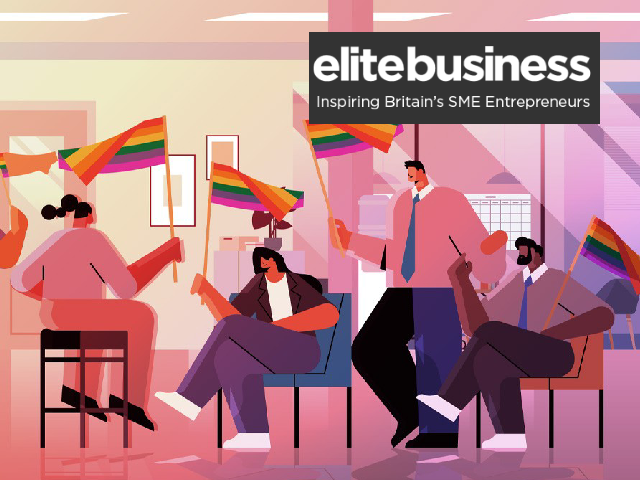As we celebrated Pride month in June we all look to reflect on what has been achieved and what we need to do going forward.
As we celebrated Pride month in June we all look to reflect on what has been achieved and what we need to do going forward. This is a month where many businesses change their logos on social media to the Pride rainbow flag. Many businesses publicly make these declarations of support but internally what mechanisms have they put in place to ensure proper LGBTQ+ inclusion in the workplace and what can employers do to create a positive working environment for all members of their team including those in the LGBTQ+ community.
Equality & discrimination
The Equality Act 2010 protects someone from discrimination and victimisation based on one of nine protected characteristics one of which is sexual orientation and/or perceived sexual orientation. This means in law you cannot be discriminated against, harassed or victimised because you are or you are believed to be gay, lesbian, bisexual or heterosexual. This covers direct discrimination as well as indirect discrimination such as rules which negatively effect someone because of their sexuality. This also covers discrimination based on someone’s perception of you and your sexuality.
Gender is not the same as sexuality. There is however protection for discrimination based on gender reassignment under the Equality Act. Further whilst the legislation itself may not specifically encompass other ways in which someone may identify their gender this has been extended by Judges in Court via case law to also cover staff who may identify as gender fluid or non-binary. As such being treated less favourably if you are transgender would be protected also in law.
Inclusion
Proper inclusion in the workplace is not the same as ensuring that someone is not discriminated against in law. As an employer you absolutely cannot discriminate because of someone’s sexuality, sex or as above gender and to do so exposes you to significant risk of claims under employment law and Equality Act claims.
Inclusion however is about embracing and supporting your team members in the LGBTQ+ community. Actively and positively welcoming, supporting and including members of the team equally. Many businesses are starting only recently to recognise the importance of a truly inclusive working environment to promote a positive working environment resulting in a more motivated and happier workforce.
What can you do as an employer to create an LGBTQ+ inclusive workplace
When trying to create an inclusive workplace we would suggest the following:
Take time to understand the LGBTQ+ community and your staff. Whilst you should never be asking someone about their sexuality or making any assumptions wider understanding and knowledge of the LGBTQ+ community is vital to creating an inclusive workplace. Stonewall has a raft of materials to help your business to understand and is an important charity in the LGBTQ+ community. You can find links to their resources here: https://www.stonewall.org.uk/.
Be careful not to assume, as many may want privacy and not wish to be involved ; different people will have different needs and it is this understanding that will make this a success.
Training
Suitable and effective training of all staff on issues and considerations facing the LGBTQ+ community will help to foster a positive workplace environment, especially for HR and management. Using the right words and pronouns ; not being afraid to discuss family and actively encourage openness . You need to engage your LGBTQ+ staff as well as your non-LGBTQ+ staff for true inclusion and support. You need to create an alliance of staff which in turn builds your comradeship within your organisation. A forum or open door policy to discuss issues is also essential so staff have a safe place to discuss any concerns and employers can pick up on issues early to diffuse , education and resolve.
Review your policies
Are they inclusive? Do they foster a positive embracing environment for your staff. As lawyers we work with many businesses to help create an inclusive workplace. You should have an equality and diversity policy but do you have policies on parental leave , adoption and surrogacy. Are your policies and procedures properly inclusive in areas such as dress code, pensions, have you used gender neutral language , do your policies support health needs of someone who may be transitioning or who has HIV?
Have you looked at the benefits afforded to heterosexual families and couples – does this mirror with same-sex couples and families. Are the benefits relevant and inclusive or do they need to be adapted such as shared parental leave – surrogacy and adoption leave allowances . If the policies are in place are staff actively encouraged to take up these benefits and do they know who to go to and how to accept these offers?
Review your business strategy
Is it inclusive? Does it support all staff and create a positive working environment, offering everyone the same opportunities.
Consider establishing
Depending on your size, an LGBTQ+ committee or forum if suitable to bridge the gap and educate business owners and management on the issues which may be facing their LGBTQ+ staff both in their workplace and more generally.
Summary
Whilst businesses need to ensure they comply with the Equality Act and not discriminate they should be going further. Pride Month and LGBTQ+ is about much more than just changing your logo on social media to the Pride Flag. There are significant business benefits to inclusion and fostering a positive, engaged and motivated workforce. We can all do our bit to keep moving progress onwards all employers have a duty but how far are they going

